

Matt Campbell
2026 Hyundai Tucson Hybrid review
7 Hours Ago
The updated Alfa Romeo Giulia is better value than ever, and the base Sport is arguably the smartest buy in the local line-up.

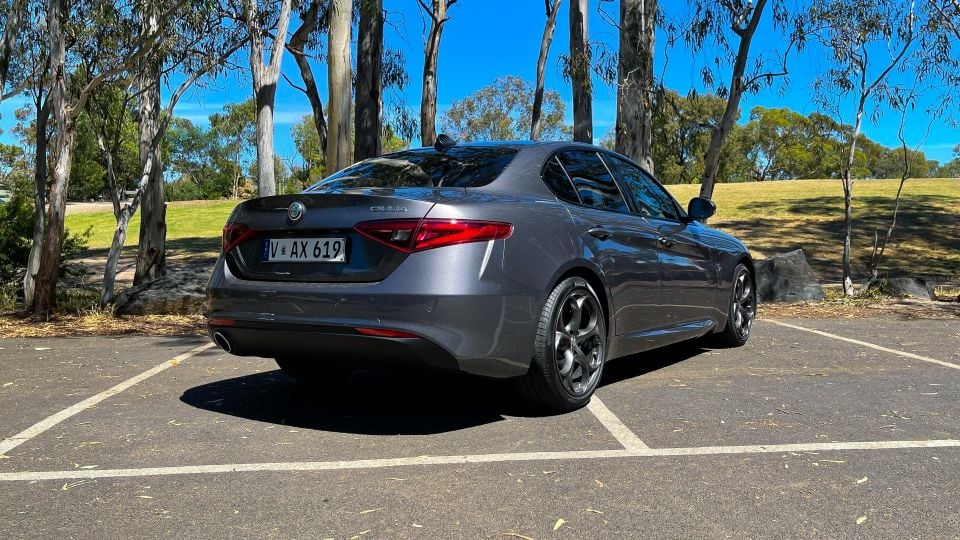

Marketplace Editor
New from
$63,950
excl. on-roads

Marketplace Editor
New from
$63,950
excl. on-roads


Marketplace Editor
New from
$63,950
excl. on-roads

Marketplace Editor
New from
$63,950
excl. on-roads
Quickly see how this car stacks up against its competition. Select any benchmark to see more details.
Where expert car reviews meet expert car buying – CarExpert gives you trusted advice, personalised service and real savings on your next new car.
Alfa Romeo burst back into the compact sports sedan segment in 2015 with the achingly pretty Giulia, winning over critics with its fantastic ride and handling balance, as well as its design.
But it wasn’t perfect. Alfa Romeo faced criticism for the interior quality, as well as the technology in the face of stiff competition from the buttoned-down Germans.
For 2021, Italy’s BMW 3 Series fighter has been refreshed to better compete with its tech-laden rivals from Germany.
The design is the same, which is nothing but a good thing, but now the Giulia is decked out with a suite of semi-autonomous driver assistance systems as standard, and packs more standard kit to boot.
Here, we’ve had an early steer of the renamed base model – the 2021 Alfa Romeo Giulia Sport – to see if it can appeal to more than just the brand’s die-hard ‘Alfisti’ fanbase.

The Giulia Sport replaces the outgoing model year’s Giulia and Giulia Super variants, priced from $63,950 before on-road costs and options.
It’s $3000 more than the old Giulia but $1950 cheaper than the outgoing Super, while packing substantially more equipment claimed to add thousands in extra value. More on that in a bit.
Our tester had a few cost options fitted, too. The stealthy Vesuvio Grey metallic paint adds $1355, while the Lusso Pack – which brings a 14-speaker Harman Kardon premium sound system, LED ambient interior lighting and adaptive dampers – demands an extra $2955.

All up, the vehicle you see here is $68,260 before on-road costs, equating to well into the $70,000 bracket once you factor in on-road costs.
The Alfa is competitively priced against its German competition, with the base BMW 320i starting at $69,900 in either Luxury Line or M Sport guise, while the Mercedes-Benz C200 starts at $66,300 before on-roads.
Compared to both the Bimmer and the Benz, the Giulia Sport boasts a more powerful engine as well as more standard equipment.
It’s also worth mentioning the Jaguar XE (which is similar to the Giulia as a driver-focused sports sedan from a challenger luxury brand) starts at $69,900 drive-away for the MY21 R-Dynamic Black entry trim and is even more powerful than the Alfa. With 221kW/400Nm and all-wheel drive as standard, the Jaguar certainly represents solid value on paper in terms of performance.
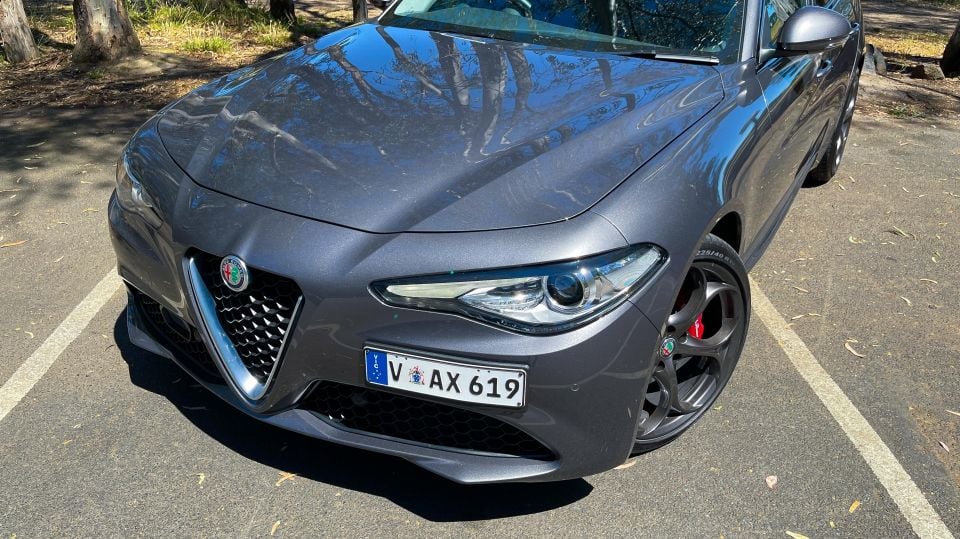
Buy your new car without the stress. It's fast, simple and completely free.

Great service from Travis and team, second time I have used this business would not hesitate to recommend them to anyone
Craig C.
Purchased a Ford Ranger in Sunshine Coast, QLD
CarExpert helped Craig save thousands on his Ford Ranger, now let us save you on your next new car.
Find a dealThe updated Giulia gets a raft of new equipment and technology as standard equipment, and the base model perhaps benefits the most given its sharper pricing compared to the higher-grade Veloce and QV models.
Items included as part of the upgrade include: heated front sports seats with electric adjustment and driver memory, a heated, leather-wrapped steering wheel, adaptive cruise control, adaptive high beam, and wireless phone charging.
There’s also iconic 19-inch five-hole alloy wheels, gloss black exterior accents, red brake calipers, aluminium pedals, a new steering wheel, and keyless access with push-button start.
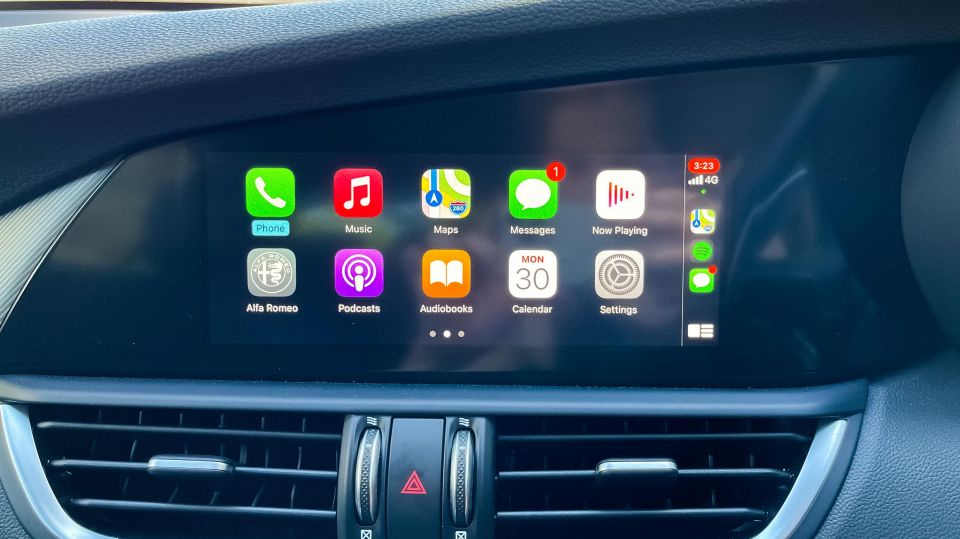
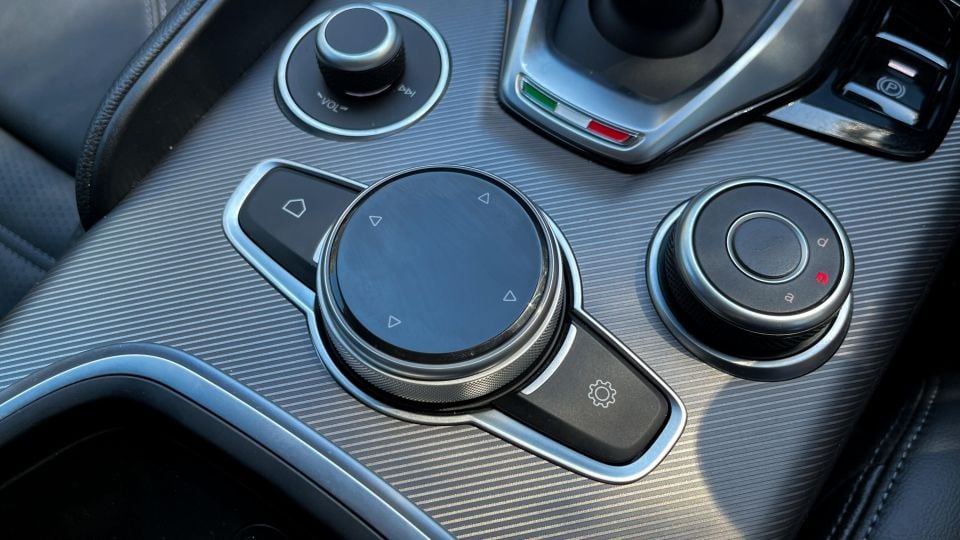
All models now receive an 8.8-inch touchscreen navigation system as standard, which offers wired Apple CarPlay and Android Auto, DAB+ radio, as well as Bluetooth phone and audio streaming. The software interface is new, as is the touch functionality.
Other changes in the cabin include a revised centre console, a new leather-trimmed gearshift, and a new rotary controller for the infotainment system designed to feel more solid than the previous unit – a common complaint was the flimsy, cheap feeling of the infotainment controller.
The Lusso Pack adds the desirable 14-speaker premium audio system by Harman Kardon (up from the standard eight speakers), adaptive damping and ambient interior lighting. Alfa Romeo could perhaps include these as standard to further strengthen the value argument against established brands, but it’s still par for the course and not a huge outlay at $2955.
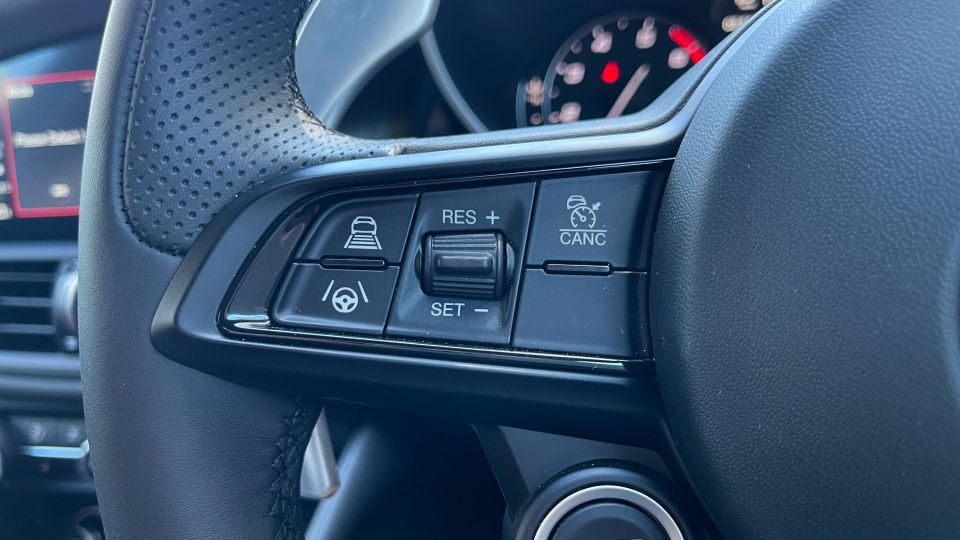
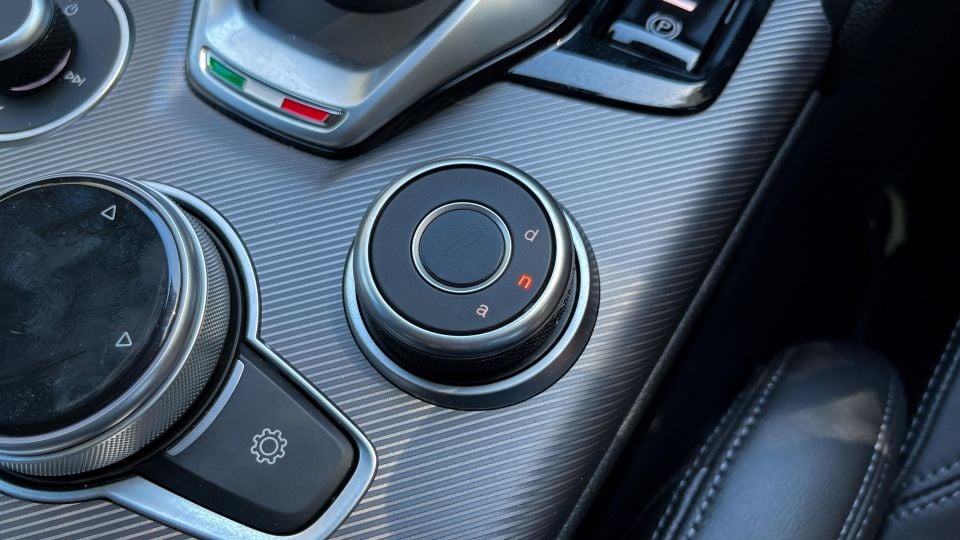
As noted earlier a suite of new driver assistance features are now included as standard equipment, including the semi-autonomous highway assist function combining adaptive cruise control with traffic jam assistance and active lane assist, auto high-beam, active blind-spot assist, traffic sign recognition, and driver attention monitoring.
Compared to rivals the Giulia is competitively equipped, though there are some features Alfa doesn’t offer or can’t match in competing vehicles.
For example, there’s no option for digital instrumentation which would allow some customisation of the driver display, nor is there adaptive full-LED front lighting, with Alfa opting for more energy hungry bi-xenon units instead. And the 8.8-inch touchscreen is smaller than just about every other car in the segment.
These things are likely a matter of personal preference, but the luxury car buyers in Australia will likely be expecting a grander display (literally) for their near-$70,000 spend. Otherwise, the Alfa measures up nicely.
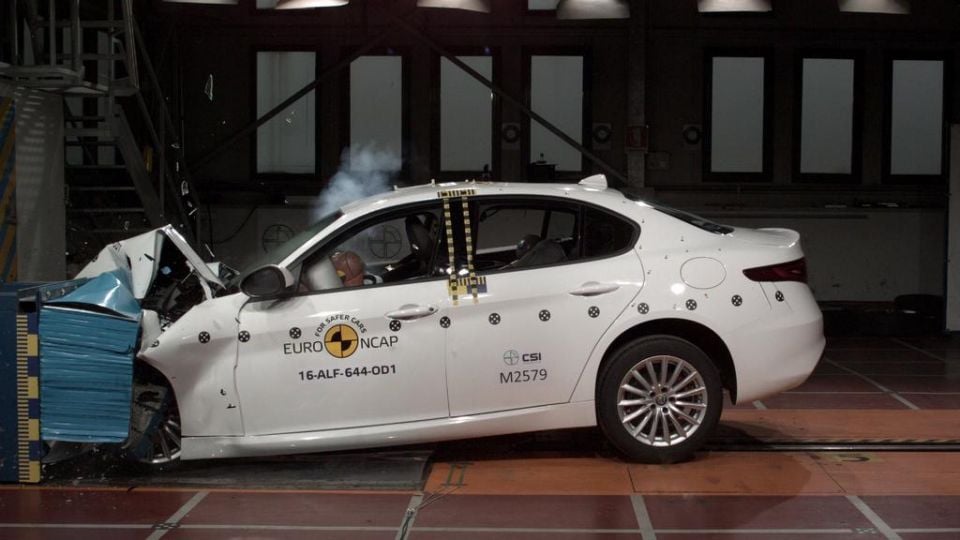
The Giulia wears a 2016-stamped five-star ANCAP safety rating, based on tests conducted by Euro NCAP. In fact, the Giulia was one of best-performing vehicles in crash testing at the time, and was only really bettered by the Stelvio crossover which shares common underpinnings.
It managed scores of 98 per cent for adult occupant protection, 81 per cent for child occupant protection, 69 per cent for pedestrian protection, and 60 per cent for safety assist.
We’d wager the Giulia’s enhanced 2020 safety suite would no doubt give it a better safety assist score, but the lack of new-age features like a front-centre airbag and front cross-traffic autonomous emergency braking (AEB) would count against it if assessed against the latest criteria.
Speaking of safety inclusions, all versions of the Giulia come equipped with AEB (City, Interurban and Vulnerable Road User), as well as the aforementioned adaptive cruise control with traffic jam assistance and active lane assist, auto high-beam, active blind-spot assist, traffic sign recognition and driver attention monitoring.
There’s also dual front, side chest and side head (curtain) airbags as standard.
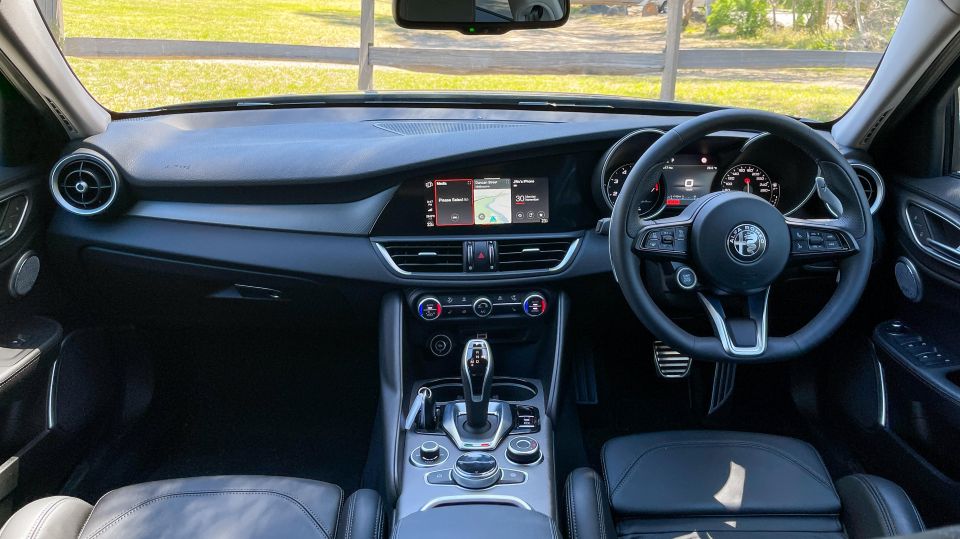
The changes, at least in terms of the design and layout of the cabin, are quite subtle so you might have to look twice to notice them.
A new steering wheel sits ahead of the driver, the there’s a revised centre console with some clever storage options is a welcome change.
There’s a new key holder next to the shifter, and the wireless phone charger slots nicely under the front centre armrest. It also has room to feed your cable through so it tucks away fuss-free when using smartphone mirroring. Genius.
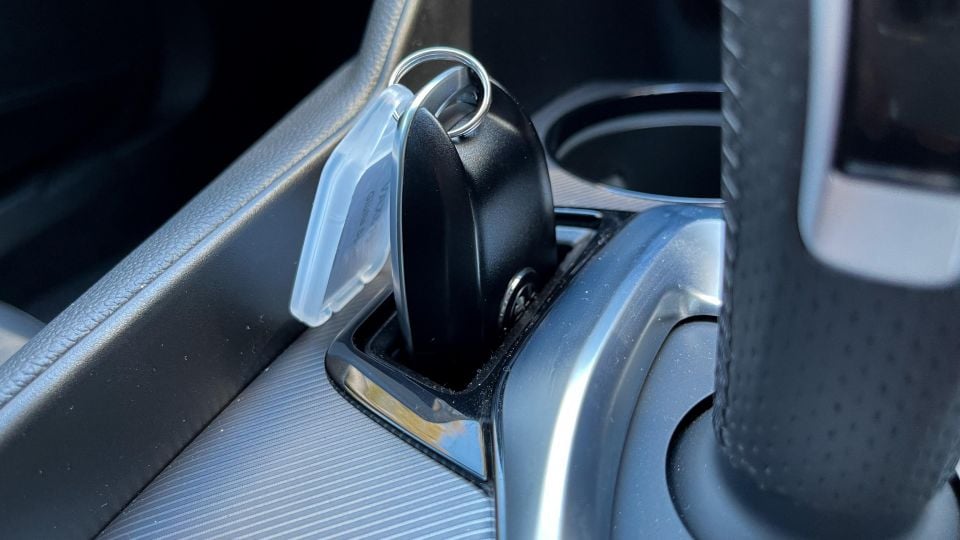
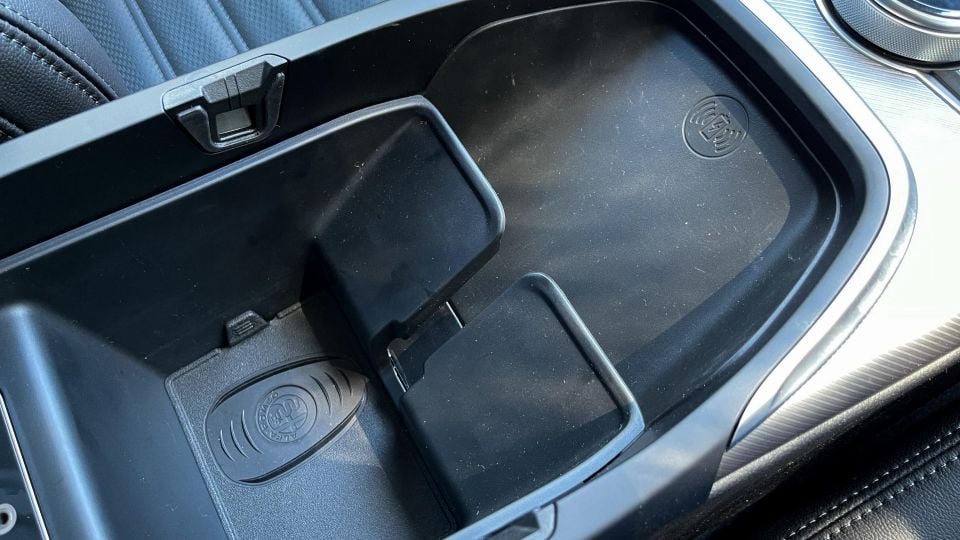
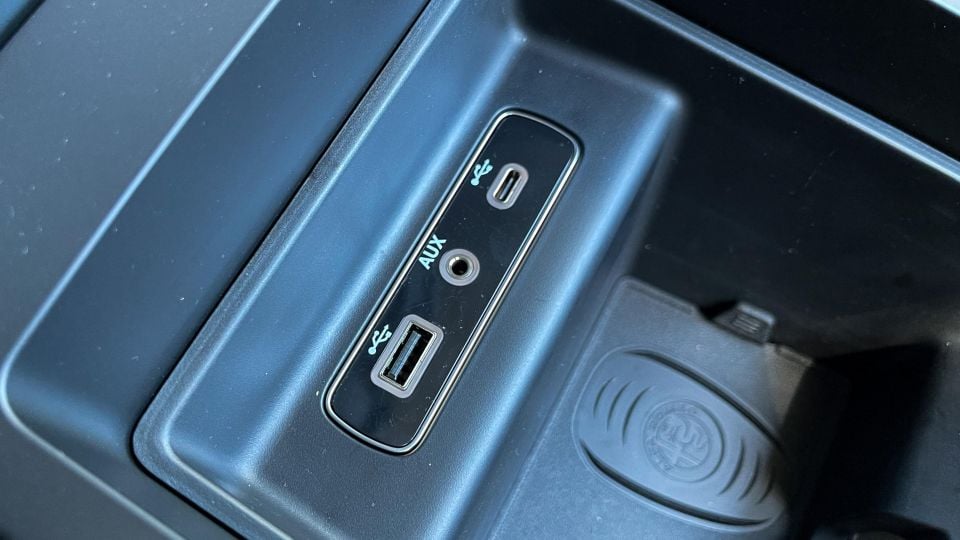
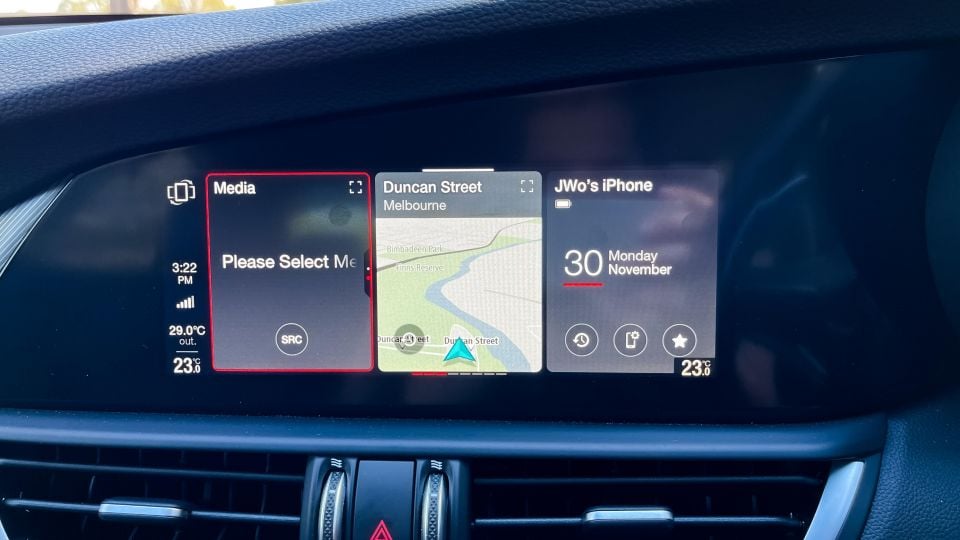
Also new is the 8.8-inch touchscreen, formerly driven via click-wheel only, which has an updated interface. The new interface carries over to the instrument cluster display, too, which features fresh graphics and menus for driver assist functions.
The Giulia certainly presents well on first glance, and the overall look and feel is a bit different to what you’ll find from the Germans – which can be a good or bad thing based on your personal preference.
It feels well built and the choice of materials is largely befitting of a premium vehicle, but it doesn’t quite feel ‘luxurious’ per se. The grained plastic atop the doors and dash just looks like old, tired leather, and some of the padded leatherette bits looks a little low-rent while being soft to touch.
For me, Alfa Romeo should offer the leather-lined dashboard and door tops available on the QV as an upholstery package of sorts, and a different trim insert from the grey textured plastic in our test car would be nice. The old Giulia Super offered a nice wood trim and the QV’s available carbon-fibre would work nicely with the Sport’s more athletic vibe.
You can opt for red or brown leather upholstery in the Sport though – the red interior would have looked very nice against our tester’s metallic grey paint.
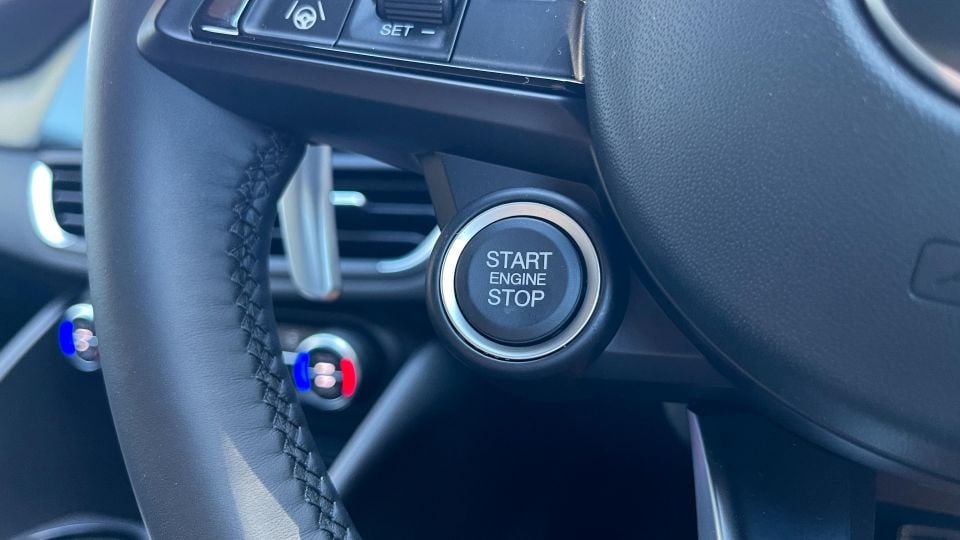
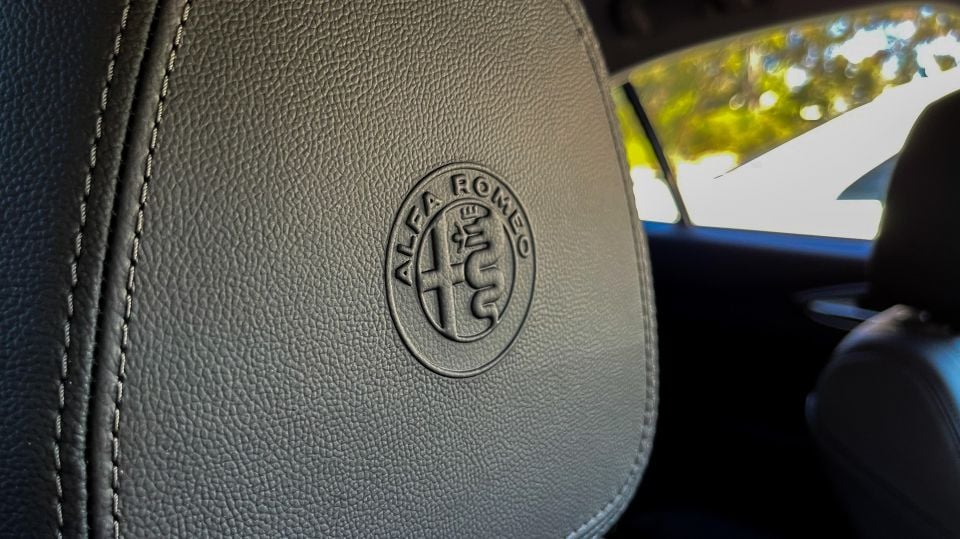
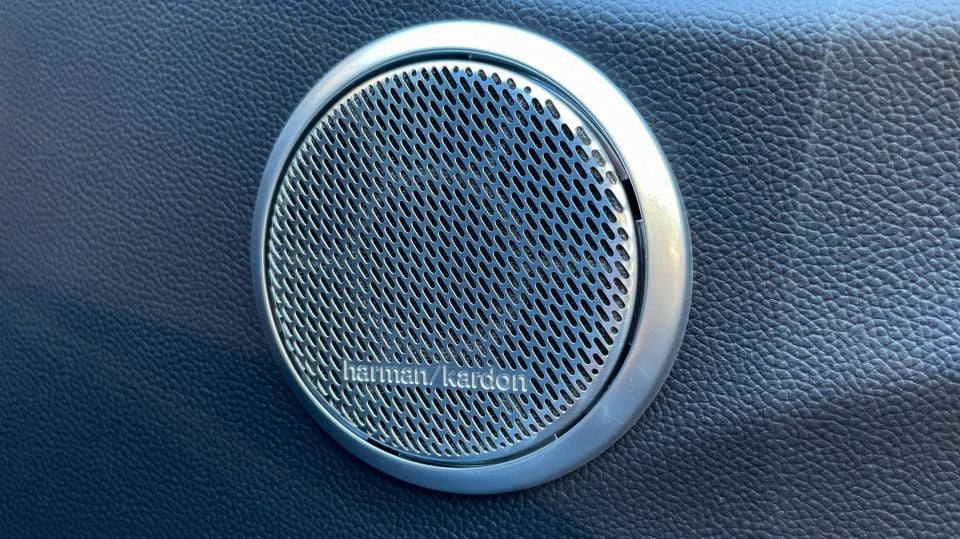
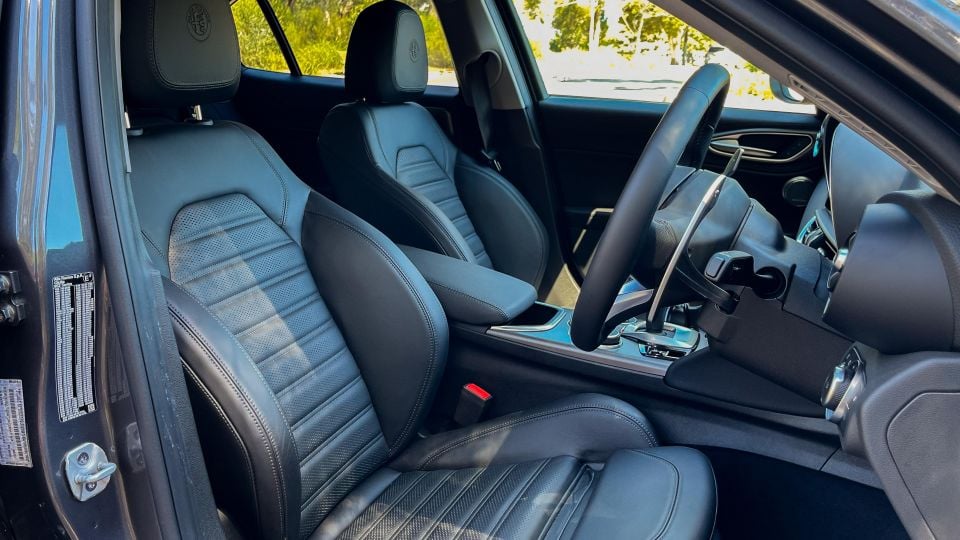
A BMW 3 Series even in base specification has a far more luxurious-feeling cockpit, both in terms of design, displays, and materials. Something to consider if you like an upmarket ambience.
Space and comfort up front is quite nice, though the sports front seats have strong bolstering that may not be appreciated by those with fuller figures. My brother is built similarly to me and didn’t like the seats all that much, so it’s worth having a sit and seeing for yourself.
Front seat heating and a heated steering wheel are nice touches should you frequent cold climates, but we found the air-conditioner could struggle on hotter days to keep the cabin a consistent temperature without having the fan loudly blasting non-stop.
The 8.8-inch infotainment system works fine without doing anything too flashy. We mainly used Apple CarPlay which worked seamlessly.
We enjoyed the optional 14-speaker Harman Kardon sound system, too. Crank up the bass a little and you get clear, thumpy sound that is certainly worth the extra spend.
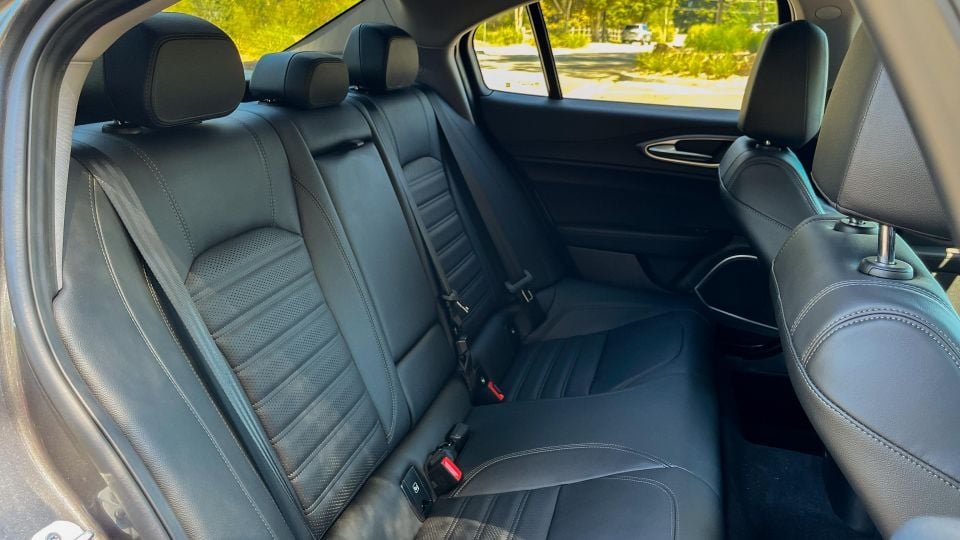
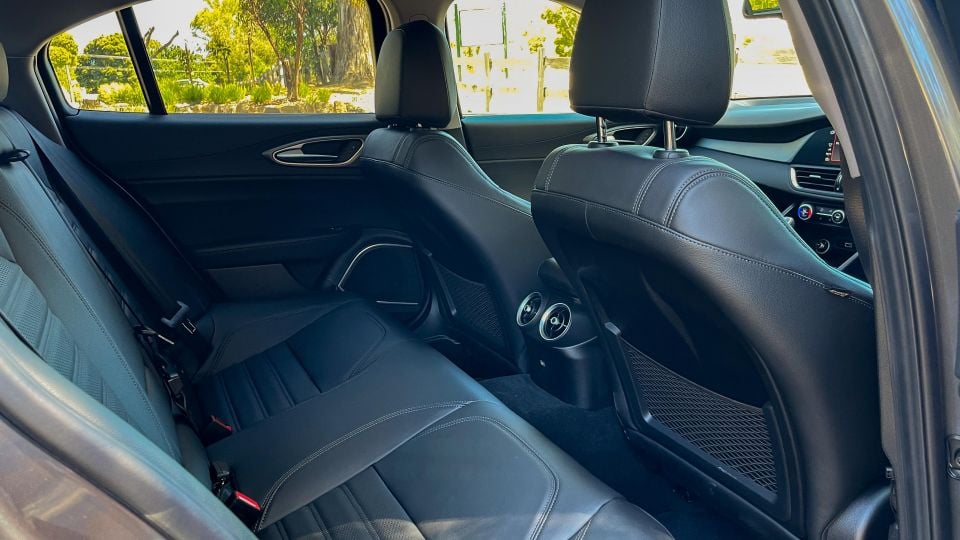
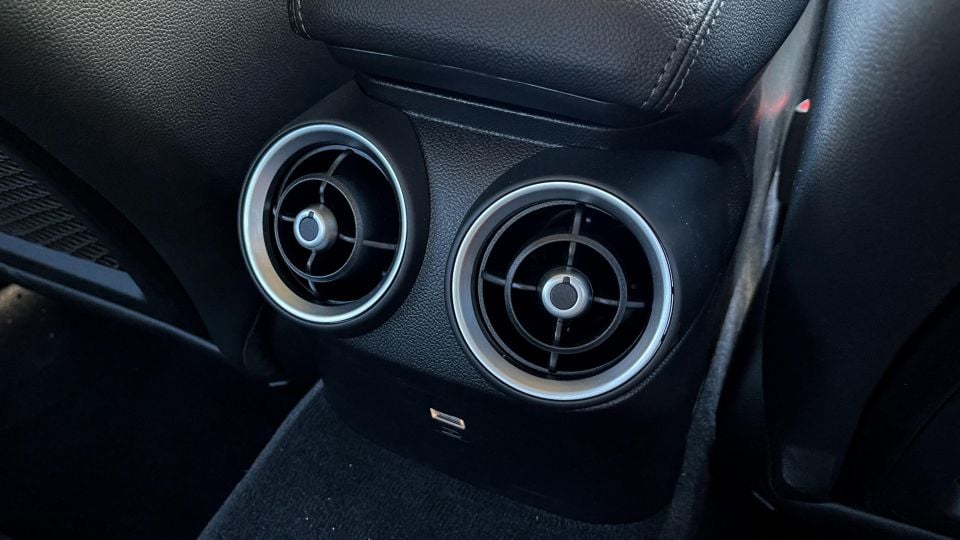
Moving into the second row, that feeling of space and plentiful amenities starts to diminish quite a bit. Legroom for taller passengers is on the tighter side, especially behind a taller driver, though headroom is fine.
There’s rear air vents but no separate temperature controls, and a sole USB power outlet. A fold-down rear centre armrest with cupholders means there’s somewhere to put a coffee, and there’s bottle holders in the doors as well as map nets on the front seat backs.
Little ones and their car seats are catered for with ISOFIX mounts on the outboard rear seats, but lanky teenagers might find the rear a tight fit.
The Giulia is made for drivers though, so the rear accommodation is probably less important – I’m sure that’ll be a consistent theme in the comments, anyway.
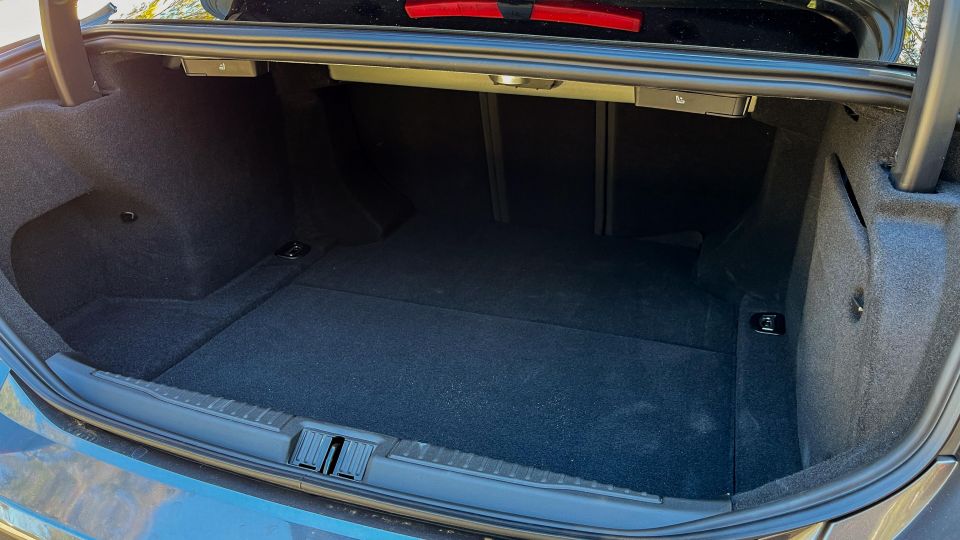
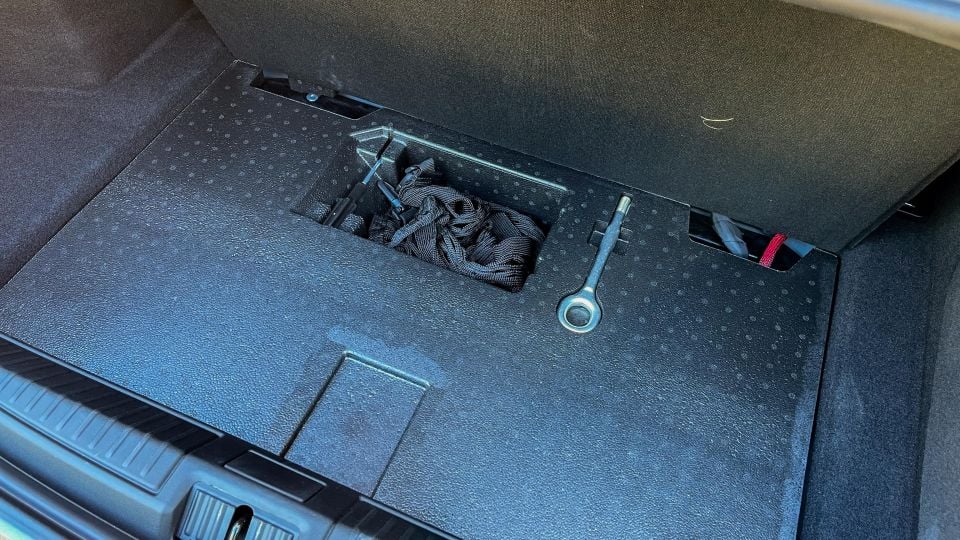
Underneath the bootlid is nicely square 480L luggage area that can also be accessed by folding down the rear centre seat should you need to stow a longer item or grab something from inside the cabin.
Given the Giulia Sport is riding on run-flat tyres, there’s no spare wheel under the boot floor.
Overall, the cabin upgrades bring welcome changes to bolster practicality and ergonomics, though it still leaves a bit to be desired in terms of material selection and ambience at least from a luxury car perspective.
Furthermore, given its clear focus on the driver the Alfa isn’t the most spacious sports sedan if you plan to cart around taller passengers.
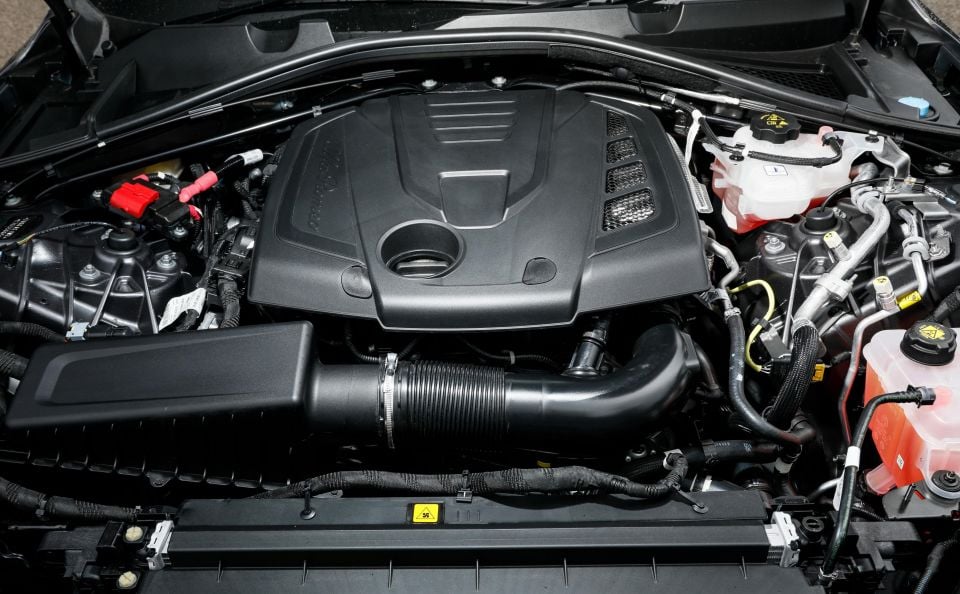
The base Giulia is powered by a 2.0-litre four-cylinder turbo petrol putting out 147kW (at 5000rpm) and 330Nm (at 1750rpm), driving the rear wheels via an eight-speed automatic from German firm ZF.
In keeping with its dynamic intentions, the Alfa is also fitted as standard with a limited-slip differential (LSD) to further aid traction when putting the power down, and the eight-speed auto offers massive column-mounted aluminium paddle shifters which are nothing less than works of art.
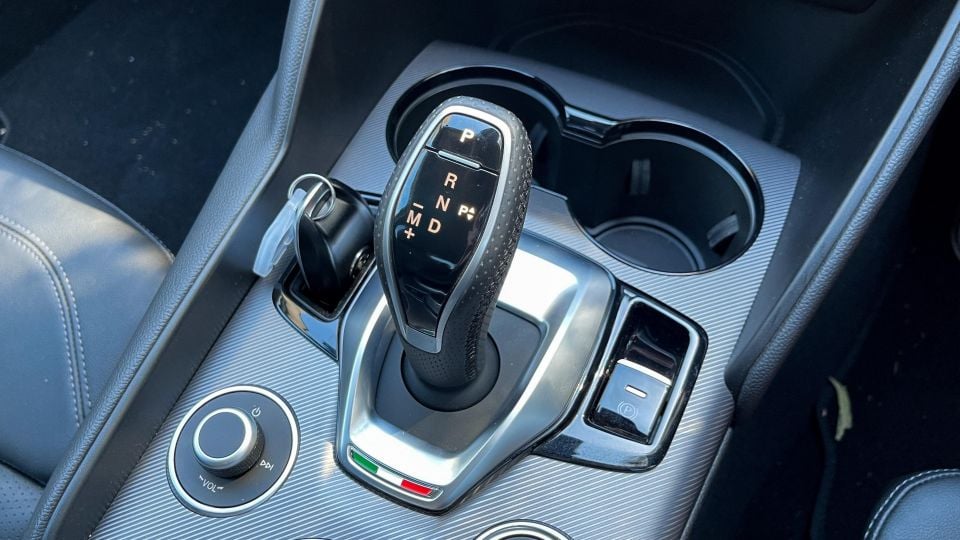
Where expert car reviews meet expert car buying – CarExpert gives you trusted advice, personalised service and real savings on your next new car.
Alfa Romeo claims a 0-100km/h dash in just 6.6 seconds, on its way to a top speed of 230km/h. Not bad for a ‘base’ luxury sedan. There’s also 330 x 28mm front brakes and 320 x 22mm rears, both ventilated.
The company claims the base Giulia will consume just 6.0L/100km on the combined cycle, equating to emissions of 138g/km of CO2. We’ll touch on the real-world fuel economy in the running costs later.
Compared to German rivals the Giulia is more powerful and quicker on paper, and features like the beefy brakes and LSD make for a compelling list of performance kit. Let’s see how that translates on the road.

There’s always been little (if nothing) wrong with how the Giulia drives, and this revised model is no different.
From the moment you fire up the engine via the steering wheel-mounted start button, you know you’re in for a fun ride.
Alfa Romeo deserves high praise for developing the Giulia’s all-round skillset. It’s easy to live with, fun to drive, reasonably punchy in this entry-level trim, and is just as refined as most of its competitors – if not more.
The steering and chassis balance is a definite standout. It’s quick and direct while not being so heavy that daily commuting is a chore. Head out on a twisty back road and you’re rewarded further with a sports car-like sharpness that makes the Giulia feel like it shrinks around you.
I’d prefer a touch more feedback through the steering wheel in normal mode, as at times you can feel a little disconnected from the front axle even though the Giulia turns so promptly.
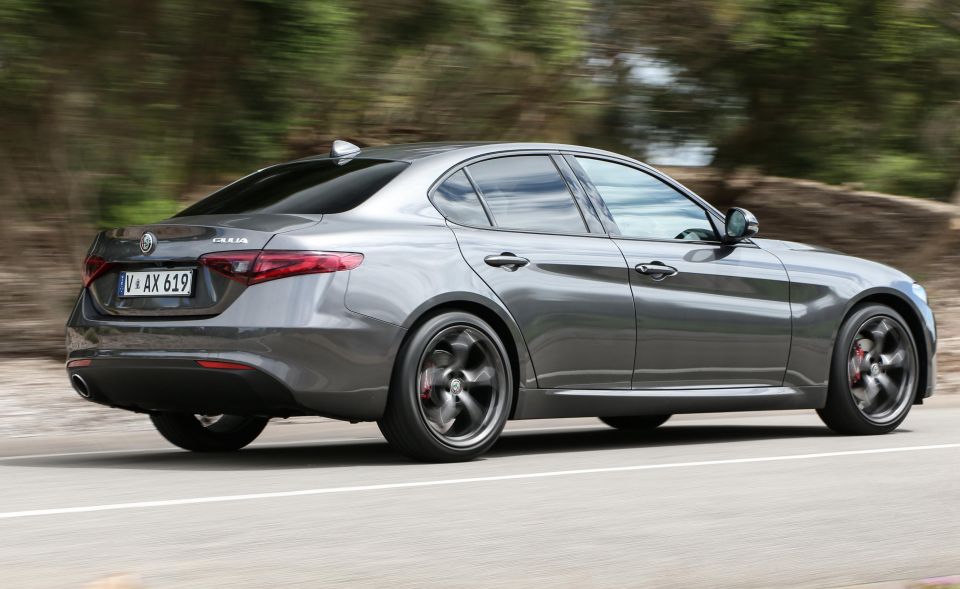
I’m always surprised at how refined the Alfa is to drive in town and on the open road, especially given the updated Sport gets 19-inch alloys and staggered low-profile 225/40 front and 255/35 rear Pirelli P-Zero performance tyres.
Insulation from road noise is impressive even on coarse-chip freeways, and there’s little to no wind noise. It certainly drives like a luxury vehicle.
Under heavy throttle the 2.0-litre four-pot transmits a sporty, rumbly tone through the cabin that’s heard without being intrusive. The sporty note seems more present in Dynamic Mode accessed via the ‘DNA’ selector on the centre console, while the steering, throttle and dampers all sharpen up for a more focused drive too.
Performance is more than adequate given the Giulia Sport’s entry-level status and price point. It’s peppy enough for brisk progress and certainly lives up to its hot hatch-level acceleration claims by the seat of the pants.
The Giulia Sport is arguably the most sensible choice in the range given Australia’s strict speed limits, though it’s hard to resist the singing exhaust note of the Ferrari-tuned 2.9-litre twin-turbo V6 in the QV. I get it…
If you’re feeling particularly racy, you can flick the gearshift into manual mode and use the lovely fixed aluminium paddle shifters mounted on the steering column – provided the Aussie summer sun hasn’t made them too hot.
The eight-speed ZF torque converter automatic is (mostly) a delight to use across all situations, offering crisp, responsive shifts when selecting manually while being generally smooth and intuitive in normal driving.
Like we’ve found with various vehicles running this shifter – it’s found in an array of Audis and BMWs – the first gear can occasionally be a little jerky and elastic, though perhaps not as pronounced as some other cars.
The brake pedal can take a bit of getting used to as well, given it’s a little grabby. Modulating it coming to a standstill in slow-moving traffic may require a bit of practice if you’re in and out of other vehicles. Thankfully, the idle stop/start system is one of the quicker ones we’ve sampled when firing back up.
The Giulia’s enhanced suite of driver assists are welcome additions, enhancing the driver’s inputs rather than intruding on them.
Alfa Romeo’s ‘Highway Assist’ system works quite well, taking care of accelerating and braking on the freeway to maintain a set speed and distance from leading vehicles, while also helping the driver stay in their lane.
Blind-spot monitoring and rear cross-traffic alert also proved to be helpful, as well as speed sign recognition. I’m sure many of the Alfisti will scoff at me saying more assistance tech is a good thing, but such is the tech-heavy world we live in.
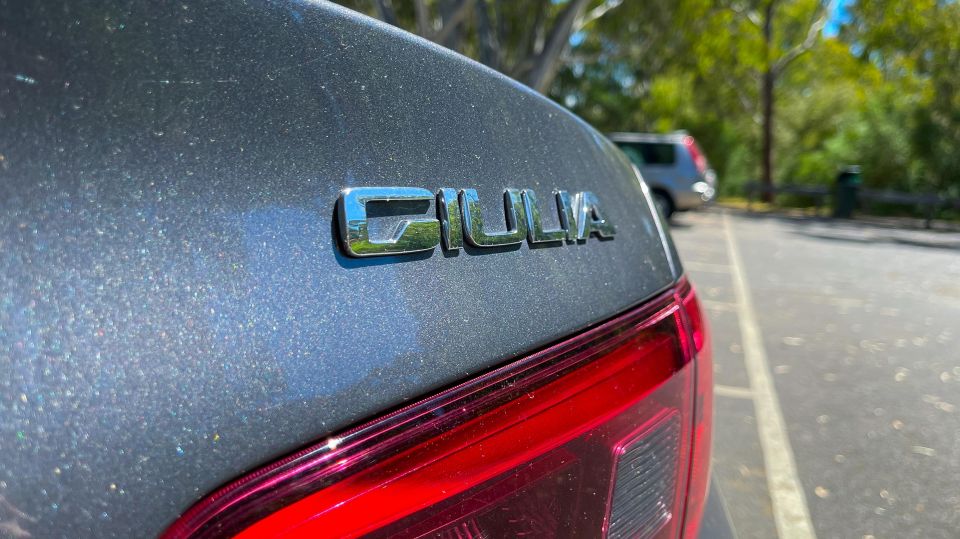
Alfa Romeo warrants Australian-delivered vehicles for three years or 150,000 kilometres, whichever comes first.
There’s also capped-price servicing covering up to five years or 60,000 kilometres – with intervals of 12 months/15,000km.
According to Alfa Romeo’s local website, those first five services cost $345, $645, $465, $1065 and $345 respectively, totalling $2865 over the five-year period.
By comparison, a BMW 3 Series can be purchased with a five-year service package (up to 80,000km) for just $1650, while the Mercedes-Benz C-Class is $2000 for three years and $4300 over five.
In terms of real-world fuel consumption, we saw an indicated 10.8L/100km over 245km of mixed driving skewed towards high-traffic urban commuting on 30-degree summer days. That’s easily 550km per fill of its 58L fuel tank, which requires 95 RON premium unleaded as a minimum.
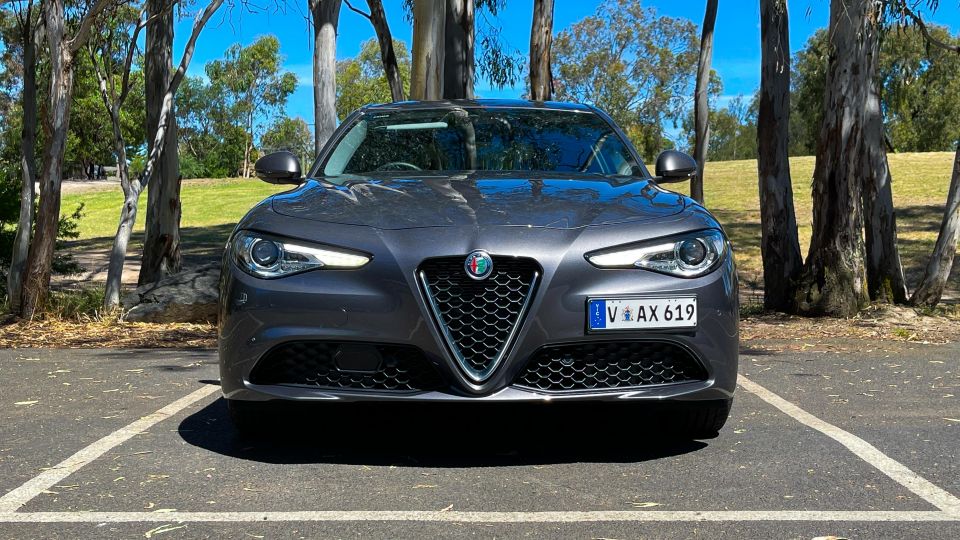
With this mid-life refresh, Alfa Romeo has certainly maintained the Giulia’s strengths and bolstered them with enhanced value and driver technology. If you already love it, you’ll probably love it a bit more now.
However, its weaknesses are still evident amid stiff competition from the sporty BMW 3 Series and Jaguar XE, which both now pack more luxurious and tech-laden cabins likely appealing to broader tastes.
With that said, the Giulia appeals to a very specific buyer – one who wants to stand out from the crowd, and likes to take the long way home through winding B-roads after a stressful day at work. They want a driver’s car that’s a little old school, and are drawn to sharp and distinctive designs.
That’s where the Giulia shines. It’s a passion project, a head-turner with unique character. While it may not be for everyone, it’s everything the target demographic wants, even in base trim.
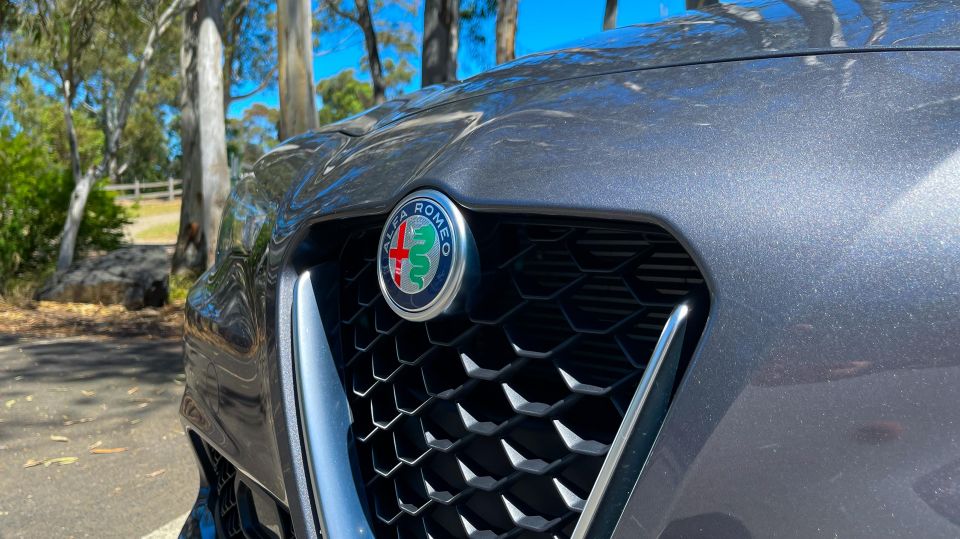
Click the images for the full gallery
MORE: 2020 Alfa Romeo Giulia pricing and specs MORE: Alfa Romeo news and reviews
Where expert car reviews meet expert car buying – CarExpert gives you trusted advice, personalised service and real savings on your next new car.
James Wong is an automotive journalist and former PR consultant, recognised among Australia’s most prolific motoring writers.


Matt Campbell
7 Hours Ago


Max Davies
23 Hours Ago


William Stopford
23 Hours Ago


Derek Fung
23 Hours Ago


Max Davies
1 Day Ago


William Stopford
2 Days Ago